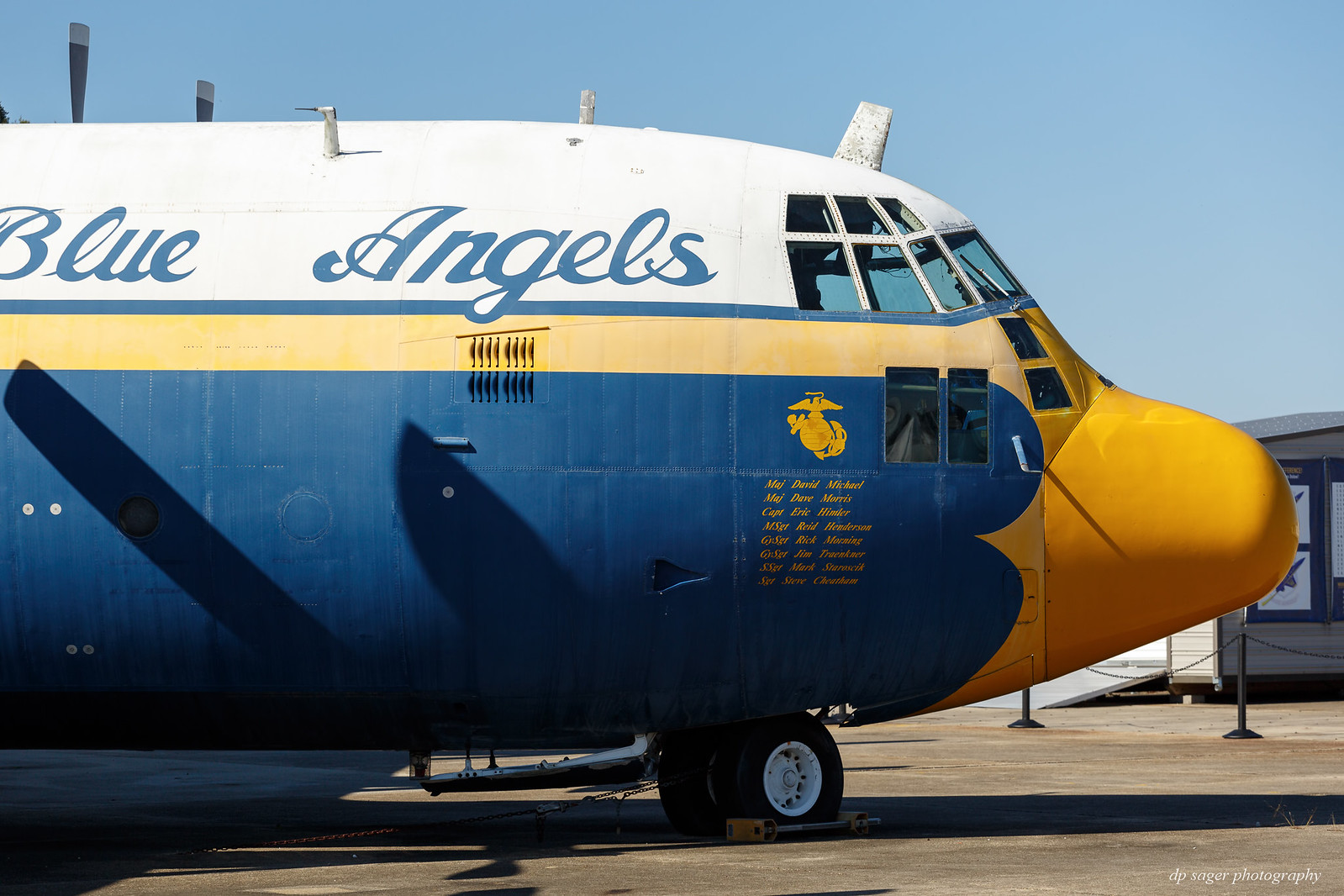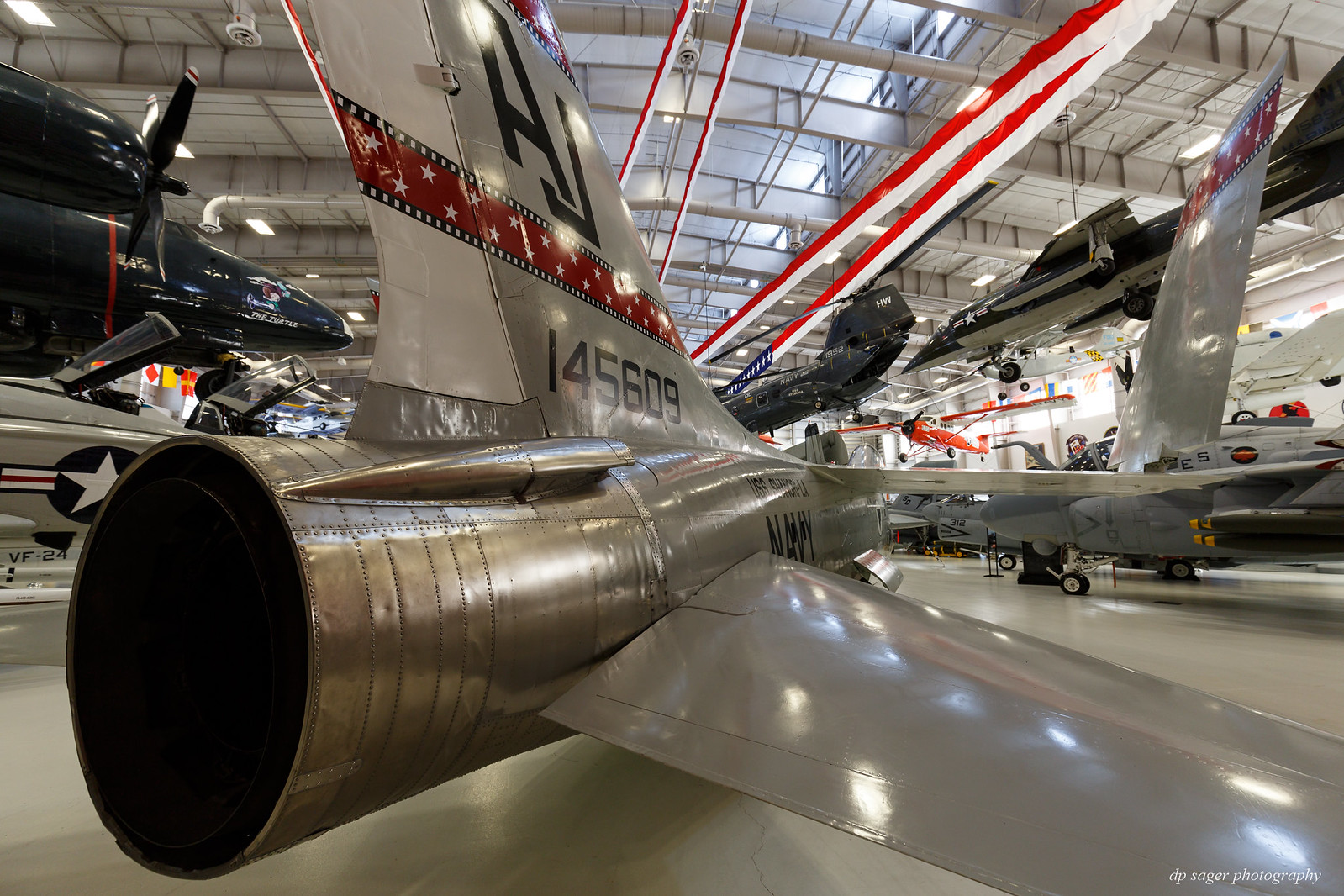National Naval Aviation Museum (pt II)
Mar 16, 2020 08:33:22 #
The National Naval Aviation Museum is one of the most-visited museums in the state of Florida. The museum presents more than 150 aircraft representing United States Navy, Marine Corps, and Coast Guard Aviation. The museum is funded by the Naval Aviation Museum Foundation, Inc, a nonprofit, 501(c)(3) educational and fundraising organization.
Naval Air Station Pensacola
Pensacola, Florida
Nov 2019
Consolidated PBY Catalina by Paul Sager, on Flickr

The Consolidated PBY Catalina was involved in almost every major operation in World War II, and figured significantly in defeating the U-boat menace in the Atlantic. Improving on earlier models, the PBY-5 was introduced in September 1940. Wartime production of the aircraft took place in Buffalo, San Diego and New Orleans. Boeing of Canada and Vickers of Canada produced Catalinas for service with the RAF, RCAF, RAAF and RNZAF.
Entering service in the 1950s, Lockheed's C-130 Hercules was a dependable, versatile aircraft for over 50 years of service. The TC-130G served with the Blue Angels as the demonstration squadron's "Fat Albert" logistics aircraft. It flew in this role from 1991 until its retirement in 2002.
C-130 Fat Albert

A free trolley ride provides guided tours the boneyard of outdoor aircraft at the National Naval Aviation Museum.
NAS Pensacola Boneyard

With a history of producing unconventional aircraft, Chance Vought began work on a tailless, swept-wing jet in June 1945. Boasting a unique "tailless" design, the F7U Cutlass incorporated a number of new and advanced features for its time. However, structural shortcomings and underpowered engines plagued the aircraft, resulting in several deaths and the loss of over a quarter of all F7Us built due to operational accidents.
F7U Cutlass

A multi-mission aircraft designed to replace the F-4 Phantom II and A-7 Corsair II, the F/A-18 Hornet became the front line naval strike fighter shortly after fleet introduction in the mid-1980s. The Hornets assigned to the Blue Angels have reached their service limit when it comes to operational flying from aircraft carriers. The airplanes that thrill air show audiences are among the longest-serving F/A-18s in the Navy’s inventory. The F/A-18A Hornet displayed outdoors at the museum entered service in August 1984, serving aboard the carrier Constellation (CV 64). The plane patrolled the skies over the Persian Gulf until 1989, when it was assigned to the Naval Reserve squadron based at Naval Air Station Cecil Field, Florida. The plane was assigned to the Blue Angels in 1997 and flew with the Navy Flight Demonstration Squadron until 2010.
F/A-18 Hornet

Images shared in this post come from the EOS 5DIII with lenses EF 70-200mm f/4L, EF 16-35mm f/4L IS and EF 50mm f/1.8. The files were process from RAW using Adobe Lightroom v6.
The RF-8 is the photo-reconnaissance version of Vought's famous F-8 Crusader. RF-8s played a critical role during the Cuban Missile Crisis providing intelligence on Soviet missiles that had been transferred to Cuba.
Vought F-8 Crusader

Que Sera Sera was the name given to this R4D-5L (Douglas DC-3) that made the first landing at the South Pole on 31 October 1956. It was named after a popular song of the time. The aircraft's crew of seven were the first Americans to set foot on the pole and the first humans since CAPT Robert F. Scott of the Royal Navy reached it in 1912.
R4D-5L Skytrain

The Navy retired its last Skyhawk in 2003, fifty-one years after the first contract issued for a prototype of the aircraft. Nearly 3,000 A-4s were produced between 1956 to 1979, their service including assignment to front line squadrons as aggressor aircraft and later as advanced trainers. During the years 1974-1986, the A-4 also equipped the Blue Angels Navy Flight Demonstration Squadron.
A-4 Skyhawk

These images are sized to fill your wide-screen display. Try using <F11> to maximize your browser window for the full effect. If the images overshoot your display, such as a laptop, just click on the image or the URL link and they'll resize to your screen from the host Flickr site. You can click a bit further into the image details on the Flickr page, if desired. EXIF data is available from the host Flickr pages as well. On the Flickr site, use your <L>key for Large and the <F11> for the full-screen.
Naval Air Station Pensacola
Pensacola, Florida
Nov 2019
Consolidated PBY Catalina by Paul Sager, on Flickr

The Consolidated PBY Catalina was involved in almost every major operation in World War II, and figured significantly in defeating the U-boat menace in the Atlantic. Improving on earlier models, the PBY-5 was introduced in September 1940. Wartime production of the aircraft took place in Buffalo, San Diego and New Orleans. Boeing of Canada and Vickers of Canada produced Catalinas for service with the RAF, RCAF, RAAF and RNZAF.
Entering service in the 1950s, Lockheed's C-130 Hercules was a dependable, versatile aircraft for over 50 years of service. The TC-130G served with the Blue Angels as the demonstration squadron's "Fat Albert" logistics aircraft. It flew in this role from 1991 until its retirement in 2002.
C-130 Fat Albert

A free trolley ride provides guided tours the boneyard of outdoor aircraft at the National Naval Aviation Museum.
NAS Pensacola Boneyard

With a history of producing unconventional aircraft, Chance Vought began work on a tailless, swept-wing jet in June 1945. Boasting a unique "tailless" design, the F7U Cutlass incorporated a number of new and advanced features for its time. However, structural shortcomings and underpowered engines plagued the aircraft, resulting in several deaths and the loss of over a quarter of all F7Us built due to operational accidents.
F7U Cutlass

A multi-mission aircraft designed to replace the F-4 Phantom II and A-7 Corsair II, the F/A-18 Hornet became the front line naval strike fighter shortly after fleet introduction in the mid-1980s. The Hornets assigned to the Blue Angels have reached their service limit when it comes to operational flying from aircraft carriers. The airplanes that thrill air show audiences are among the longest-serving F/A-18s in the Navy’s inventory. The F/A-18A Hornet displayed outdoors at the museum entered service in August 1984, serving aboard the carrier Constellation (CV 64). The plane patrolled the skies over the Persian Gulf until 1989, when it was assigned to the Naval Reserve squadron based at Naval Air Station Cecil Field, Florida. The plane was assigned to the Blue Angels in 1997 and flew with the Navy Flight Demonstration Squadron until 2010.
F/A-18 Hornet

Images shared in this post come from the EOS 5DIII with lenses EF 70-200mm f/4L, EF 16-35mm f/4L IS and EF 50mm f/1.8. The files were process from RAW using Adobe Lightroom v6.
The RF-8 is the photo-reconnaissance version of Vought's famous F-8 Crusader. RF-8s played a critical role during the Cuban Missile Crisis providing intelligence on Soviet missiles that had been transferred to Cuba.
Vought F-8 Crusader

Que Sera Sera was the name given to this R4D-5L (Douglas DC-3) that made the first landing at the South Pole on 31 October 1956. It was named after a popular song of the time. The aircraft's crew of seven were the first Americans to set foot on the pole and the first humans since CAPT Robert F. Scott of the Royal Navy reached it in 1912.
R4D-5L Skytrain

The Navy retired its last Skyhawk in 2003, fifty-one years after the first contract issued for a prototype of the aircraft. Nearly 3,000 A-4s were produced between 1956 to 1979, their service including assignment to front line squadrons as aggressor aircraft and later as advanced trainers. During the years 1974-1986, the A-4 also equipped the Blue Angels Navy Flight Demonstration Squadron.
A-4 Skyhawk

These images are sized to fill your wide-screen display. Try using <F11> to maximize your browser window for the full effect. If the images overshoot your display, such as a laptop, just click on the image or the URL link and they'll resize to your screen from the host Flickr site. You can click a bit further into the image details on the Flickr page, if desired. EXIF data is available from the host Flickr pages as well. On the Flickr site, use your <L>key for Large and the <F11> for the full-screen.
Mar 16, 2020 08:40:41 #
Mar 16, 2020 08:49:36 #
Another great set Paul. I am surprised that there isn't an F-14 in the mix.
Mar 16, 2020 09:09:51 #
Been there many times since its first opening. Good memories seeing some of the aircraft types I was intimately acquainted with way back when
.
.
Mar 16, 2020 09:21:05 #
Question regarding the Skytrain. What determined whether this type of aircraft was denominated a DC-3 or C-47?
Mar 16, 2020 09:21:13 #
Mar 16, 2020 09:26:10 #
whfowle
Loc: Tampa first, now Albuquerque
Thanks Paul for the introduction to the Naval Aviation Museum in Pensacola. I will have to add it to my list to visit next time I'm in Florida.
Mar 16, 2020 09:27:08 #
Mar 16, 2020 10:03:16 #
sabfish wrote:
Question regarding the Skytrain. What determined whether this type of aircraft was denominated a DC-3 or C-47?
Thank you sabfish! I did some research on DC-3s in an earlier post: https://www.uglyhedgehog.com/t-612404-1.html
The government / military has to have their own names for the same civilian equipment, such as the Navy's R4D vs Army's C-47 vs civilian DC-3. The inside configuration and rear access for cargo vs seats for paratroops is another differentiation for the model numbers.
Mar 16, 2020 10:03:43 #
SpyderJan wrote:
Another great set Paul. I am surprised that there isn't an F-14 in the mix.
Thanks Jan! There were a few F-14s, but I see in my LR catalog, I only have one image I tagged F-14 for just a nose shot. I believe there was an F-14 on a pedestal outside the museum entrance, but the light / angles didn't capture my attention. Next time.

Mar 16, 2020 10:03:50 #
Thank you kodiac1062, Jan, vj62, sabfish, RichardTaylor, Wayne, Richard! As you can see in many of these images, the aircraft are packed into the display buildings. I found that arrangement a challenge to try to find an image that made sense, where these close-ups seemed the best approach. Glad you enjoyed and will have a chance to visit this excellent museum. As a 'part II' post, here's a link back to earlier selection of images from this Nov 2019 visit: https://www.uglyhedgehog.com/t-635896-1.html
Mar 16, 2020 13:08:23 #
Mar 16, 2020 14:07:21 #
CHG_CANON wrote:
Thank you sabfish! I did some research on DC-3s in an earlier post: https://www.uglyhedgehog.com/t-612404-1.html
The government / military has to have their own names for the same civilian equipment, such as the Navy's R4D vs Army's C-47 vs civilian DC-3. The inside configuration and rear access for cargo vs seats for paratroops is another differentiation for the model numbers.
The government / military has to have their own names for the same civilian equipment, such as the Navy's R4D vs Army's C-47 vs civilian DC-3. The inside configuration and rear access for cargo vs seats for paratroops is another differentiation for the model numbers.
Thank you for the great explanation and the link. I once flew a DC-3 from San Juan, PR to Tortola, BVI in the 70's.
If enjoy airplanes, and you obviously do, check out these pictures and video on model jets (DPreview)
yohttps://www.dpreview.com/videos/5978451110/shooting-rc-jets-with-the-olympus-om-d-e-m1-mark-iiiu
Mar 17, 2020 06:27:11 #
CHG_CANON wrote:
The National Naval Aviation Museum is one of the m... (show quote)
Excellent set Paul, thanks for sharing.
Mar 17, 2020 08:45:48 #
If you want to reply, then register here. Registration is free and your account is created instantly, so you can post right away.








